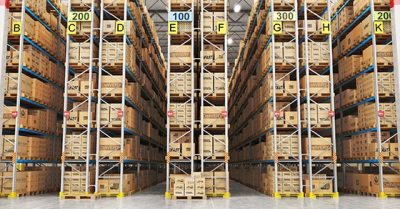
Pierre Liguori, Director of the supply chain consultancy firm, Tokema International, describes the opportunities for logistics providers created by the coming up “Industry 4.0” and highlights the challenges encountered by the logistics industry.
Industry 4.0 is a concept that initially appeared in Germany and is considered to describe the fourth industrial revolution in manufacturing. This industrial transformation shall be achieved with real-time exchanged data, automation, robotics, cloud, AI, connected devices and equipment (IoT) and augmented reality to connect innovation, new technologies and humans.
What does it mean for logistics and supply chains? Logistics 4.0 has recently emerged as a move to smart transportation and logistics, enhanced sales and operations planning (S&OP) and dynamic logistics network configuration.
As far as S&OP is concerned real-time data provided by connected devices will be the most disruptive factor: in a connected world, real-time end consumer behaviour has a major impact on the amount of real-time data available… and as a consequence has a real-time effect on supply chains: changed priorities, real-time adjusted activity forecast, real-time adjusted warehouse and transport capacity, etc… will help manufacturers to improve their productivity, reduce costs and significantly improve their customer-centricity approach (which means value creation with enhanced customer experience).
Big Data is obviously one of the critical success factors: the more collected real-time data is available the more value and optimisation are put into supply chains. However, the challenge for companies is to be able to cope with this huge amount of data. A new generation of ERP’s is expected to come that shall include more artificial intelligence features and connected devices to cope with predictive analytics in demand planning, real-time planning adjustment, scenario planning and advanced profit optimisation schedules. Manufacturers will have to move from their traditional S&OP monthly process if they want – at least – to remain competitive on their respective markets and meet their customer expectations. This is a deep trend: by 2021, 20% of the Global 2000 Manufacturers will depend on embedded AI, powered by i-ERP. It is therefore not only a question of remaining competitive but a matter of survival: remember that Toy’s R Us missed the digital revolution and did not initially believe in e-commerce. Remember Kodak did not believe in digital pictures at all.
Even traditional logistics networks will evolve from local, regional or even global Operations structures to more decentralised – but connected – open and flexible Operations footprints. As a result, traditional distribution centres might be ultimately replaced by a “no warehouse” concept. It does not mean that there will be less needs for warehousing. This is exactly the opposite: as the world is constantly changing, flexible warehousing concepts will be implemented. It means the typical 3-year contract scheme in Europe might disappear for short term agreements. 3PL’s should include this new trend in their own development strategy to further develop multi-user warehouses, invest in automation to implement lean processes, develop a network of well-located warehouses and finally create “plug & play” implementation methodologies in order to start new operations with customers with a maximum of agility and efficiency within shorter time frames.
What about warehousing and transportation? Real-time data provided by autonomous devices, equipment and vehicles require real-time traceability and visibility. This is a challenge for freight forwarders who occasionally invested in advanced order management and track & trace systems. This is also critical for warehousing and logistics providers who did yet not invest in automation and robotics as most of the e-commerce and retail key players like Amazon or John Lewis did.
Number one question is how to give access to expensive technologies to medium-sized 3PLs who have limited CAPEX capabilities. Phil Oliver, topVOX Managing Director for the UK and Ireland, perfectly described this challenge during the last UKWA National Conference (March 7th and 8th) stressing the importance for technology providers to build attractive and collaborative solutions by consolidating several 3PLs projects.
Question two: how to anticipate the strong impact of Industy 4.0 on organisations and human dimensions? More agility will be required from organisations to be able to react to real-time adjustments and continuous changes in the supply chain management in order to meet demands of the stakeholders (both internal and external). And new skills will be required from employees who will work with all this technology: new techniques (like project management), new training methods to ever-changing technologies, new planning systems, etc… This 4.0 Supply Chain revolution will require by 2023 4 million more high-skilled logistics workers in the UK alone when 6 million low-skilled logistics jobs shall disappear during the same period in the country. As it was perfectly described by Peter Jones, MD Logistics Learning Alliance, the challenge is to train as much as possible the current workforce and attract more people – especially young workers – to be able to bridge the skills gap and provide the workforce the logistics industry will need in the future.
Question three – this is probably the most important question to ask: did 3PL’s, freight forwarders and transportation companies hear this “wake-up call” that the world has changed and that it is time to invest in technology and people development?
I usually like to take the example of the difference between chameleons and dinosaurs to speak about change: chameleons adjust their colour all the time to survive in their environment. Dinosaurs disappeared.


